 Summer and Beach- What to Wear and How to Protect Yourself from the Sun!
Summer and Beach- What to Wear and How to Protect Yourself from the Sun!
Summer is here and just about everybody heads to the beach at some point. After all, it is one of the most beloved summer pastimes which lets us to enjoy the sun, watch the waves, go for a swim, and stroll along the beach. It is especially true for this year’s summer which brought record high temperatures all over the United States. In fact, many believe that it is the hottest summer in the last several decades already! However, in order to make the most of your beach time, you need to keep several factors in your mind.
1. Choose right swimwear. This season, swimsuits with geometrical prints, flowers, stripes, ethnic design, and polka dots are especially favored by fashionistas. Bright colors are also in- especially orange, yellow, red, and blue. At the same time, classic combination of black and white always puts a person in style. For man, comfortable swim trunks with bold designs work well this season as well. When choosing the cut of your swimsuit- consider what activities you will more likely pursue during your stay at the beach. If you are planning to engage into active sports such as volleyball, surfing, etc. you would be more comfortable wearing a one-piece bathing suit which will allow you to move freely without worrying whether something is showing. However, if you prefer to sunbathe- bikinis should be your first choice. This season, bikinis with triangular tops (as opposed to more rounded ones) are especially fashionable.
2. Accessorize wisely. Besides bathing suits, you can make a bold fashion statement by choosing right accessories. First of all, do not forget your sunglasses! This season, aviator, cat-eye,  and oversized sunglasses are in. Also, the color of your sunglasses can vary widely from pink, yellow, and blue to classic grey, black, and brown. Gradient lenses are also popular in 2012. Also, to better protect yourself from relentless sun, bring a brimmed hat or at least a cap. Floppy wide-brimmed hats seem to be all the rage this season. For leisurely strolls along the beach, bring along a cover-up such as chiffon skirt, sarong, or wrap; and for a man, light t-shirt always works well. You can also improve your beach look by playing with your footwear. Instead of plain and boring flip-flops, choose sandals decorated with beads, rhinestones, or appliqués for a true fashion statement.
and oversized sunglasses are in. Also, the color of your sunglasses can vary widely from pink, yellow, and blue to classic grey, black, and brown. Gradient lenses are also popular in 2012. Also, to better protect yourself from relentless sun, bring a brimmed hat or at least a cap. Floppy wide-brimmed hats seem to be all the rage this season. For leisurely strolls along the beach, bring along a cover-up such as chiffon skirt, sarong, or wrap; and for a man, light t-shirt always works well. You can also improve your beach look by playing with your footwear. Instead of plain and boring flip-flops, choose sandals decorated with beads, rhinestones, or appliqués for a true fashion statement.
3. Most importantly, protect yourself from the sun. Nowadays, everybody knows that exposure to the sun increases the chances of getting skin cancer dramatically. In fact, skin cancer is the most common cancer there is; and it affects more than two million Americans each year. As such, the importance of sunscreens cannot be stressed enough. Choose a sunscreen with at least SPF 30 for the face and SPF 45 for the body. Reapply it every two hours or after you went swimming or sweated profusely. Generally, people apply too little- as a rule, you practically have to coat yourself with thick and even layer of sunscreen to properly protect yourself. Also, nowadays, you can find beach attire with built-in sun protection which will also decrease your chances of getting skin cancer. Bring an umbrella with you to stay in the shade (but remember that you can still get sunburned in the shade) or choose a more shadowy part of the beach.
Summer is here! Enjoy the beach, look beautiful while doing so and, most importantly, be careful.


 Perhaps Leonardo Da Vinci said it best, “Once you have flown, you will walk the earth with your eyes turned skyward, for there you have been, and there you long to return.” Certainly that lyrical sentiment was true for the two men who celebrate a record setting, 25th anniversary this July.
Perhaps Leonardo Da Vinci said it best, “Once you have flown, you will walk the earth with your eyes turned skyward, for there you have been, and there you long to return.” Certainly that lyrical sentiment was true for the two men who celebrate a record setting, 25th anniversary this July.
 Due to weather conditions, the landing site had been altered from the British Isles to the Ireland coast. Technically, they touched down briefly on the targeted beach but a mechanism that releases the balloon from the capsule failed to work. Soon, they were on a bumpy, bouncing ride across the channel. Rough, contentious seas seeped into the capsule. Though there was some discussion on coaxing the limping conveyance to shore, both men concluded it was wiser to hazard a helicopter rescue from the water after a 60-foot leap off the capsule roof. Despite their soggy touchdown, the trip was an undeniable success.
Due to weather conditions, the landing site had been altered from the British Isles to the Ireland coast. Technically, they touched down briefly on the targeted beach but a mechanism that releases the balloon from the capsule failed to work. Soon, they were on a bumpy, bouncing ride across the channel. Rough, contentious seas seeped into the capsule. Though there was some discussion on coaxing the limping conveyance to shore, both men concluded it was wiser to hazard a helicopter rescue from the water after a 60-foot leap off the capsule roof. Despite their soggy touchdown, the trip was an undeniable success.
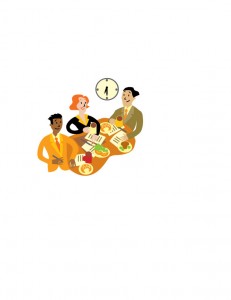 Lovers of the English language might enjoy this. It is yet another example of why people learning English have trouble with the language. Learning the nuances of English makes it a difficult language. (But then, that’s probably true of many languages.)
Lovers of the English language might enjoy this. It is yet another example of why people learning English have trouble with the language. Learning the nuances of English makes it a difficult language. (But then, that’s probably true of many languages.) The 4th of July is probably one of the most well-known and beloved holidays in the United States of America. Everybody looks forward to firing up some barbecue, inviting friends and family to share their meal, watch the fireworks, and enjoy all things American. However, there is considerably more behind this holiday than the usual things, which came to be associated with it. While most people connect the 4th of July with such words as Concord, Lexington, Bunker Hill, and the “British Are Coming,”- there is more to the history of the Independence War. Most people associate the white Protestants as a major force behind the Independence War. However, it was not exactly the case. There were other segments of American population, which provided invaluable input toward the ultimate goal of achieving independence from the British Empire.
The 4th of July is probably one of the most well-known and beloved holidays in the United States of America. Everybody looks forward to firing up some barbecue, inviting friends and family to share their meal, watch the fireworks, and enjoy all things American. However, there is considerably more behind this holiday than the usual things, which came to be associated with it. While most people connect the 4th of July with such words as Concord, Lexington, Bunker Hill, and the “British Are Coming,”- there is more to the history of the Independence War. Most people associate the white Protestants as a major force behind the Independence War. However, it was not exactly the case. There were other segments of American population, which provided invaluable input toward the ultimate goal of achieving independence from the British Empire. Federal government fails when it comes to enforcing United States race classification laws (Changing the majority)
Federal government fails when it comes to enforcing United States race classification laws (Changing the majority)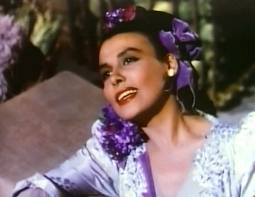 reclassified; they will still be in the majority and therefore need to catch up on their African history by reviewing books like, Dr. Chancellor James Williams an African American sociologist, historian and writer and the author of “The Destruction of Black Civilization” (1971).
reclassified; they will still be in the majority and therefore need to catch up on their African history by reviewing books like, Dr. Chancellor James Williams an African American sociologist, historian and writer and the author of “The Destruction of Black Civilization” (1971).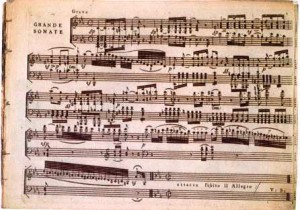 ll, music industry is thriving. The number of albums and songs released each year is growing and new artists appear seemingly on a daily basis. Consequently, musical environment of 2012 is substantially different from that of 1992, at least quantitatively if not qualitatively (in opinions of many people, our two biggest pop stars of today, Lady Gaga and Adele, are somewhat reminiscent of Madonna and Mariah Carey). So, it seems to be good news that all technological innovations led to the positive development of music industry. However, it is not exactly so. While music industry is in good shape, record industry is negatively affected by the ease with which people can access music nowadays.
ll, music industry is thriving. The number of albums and songs released each year is growing and new artists appear seemingly on a daily basis. Consequently, musical environment of 2012 is substantially different from that of 1992, at least quantitatively if not qualitatively (in opinions of many people, our two biggest pop stars of today, Lady Gaga and Adele, are somewhat reminiscent of Madonna and Mariah Carey). So, it seems to be good news that all technological innovations led to the positive development of music industry. However, it is not exactly so. While music industry is in good shape, record industry is negatively affected by the ease with which people can access music nowadays.
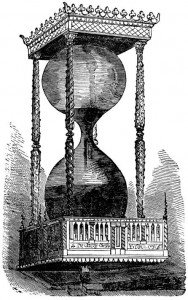 Time and People: How and When We Started Keeping Time
Time and People: How and When We Started Keeping Time
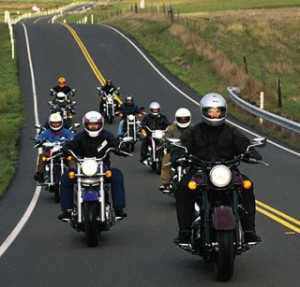 Ask any adult what they think about riding a motorcycle and you’re likely to get one of two answers—very cool or totally nuts. For those folks that are dedicated “bikers,” no amount of scary stats on accidents, brain injuries, or deaths will convince them to give up their Harleys or Hondas; others are convinced that even a parked motorcycle is lethal. This is a machine that inspires intense feelings, good, bad, and ugly.Today, more people than ever before are riding motorcycles, some estimates put the number at about
Ask any adult what they think about riding a motorcycle and you’re likely to get one of two answers—very cool or totally nuts. For those folks that are dedicated “bikers,” no amount of scary stats on accidents, brain injuries, or deaths will convince them to give up their Harleys or Hondas; others are convinced that even a parked motorcycle is lethal. This is a machine that inspires intense feelings, good, bad, and ugly.Today, more people than ever before are riding motorcycles, some estimates put the number at about 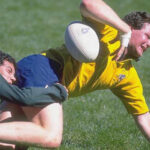 Testosterone, it’s a natural substance with a colorful history and now its synthetic equivalent is a powerful moneymaker for the pharmaceutical industry. The television commercials for testosterone gel are ubiquitous. They go something like this: a middle-aged male, somewhere between ages 46 and 55, can barely drag himself out of bed. He shuffles through his day at the office while the younger men around him appear to skip down the halls. He has no energy for a pick-up game of basketball or handball or tennis. He has no appetite for drinks after work and forget dinner, dancing or sex with the wife. And of course, he’s depressed. Who wouldn’t be? But all it takes is a little testosterone gel and voila, he’ll soon dance the night away, work around the clock, and be a tiger in the bedroom. The Mighty “T” has come out of the illicit steroid trade of sports and into the mainstream of men’s health care.
Testosterone, it’s a natural substance with a colorful history and now its synthetic equivalent is a powerful moneymaker for the pharmaceutical industry. The television commercials for testosterone gel are ubiquitous. They go something like this: a middle-aged male, somewhere between ages 46 and 55, can barely drag himself out of bed. He shuffles through his day at the office while the younger men around him appear to skip down the halls. He has no energy for a pick-up game of basketball or handball or tennis. He has no appetite for drinks after work and forget dinner, dancing or sex with the wife. And of course, he’s depressed. Who wouldn’t be? But all it takes is a little testosterone gel and voila, he’ll soon dance the night away, work around the clock, and be a tiger in the bedroom. The Mighty “T” has come out of the illicit steroid trade of sports and into the mainstream of men’s health care. Let’s not beat around the bush, talking about herpes with a prospective lover isn’t appealing. In fact, it would be easier, and a lot more fun, to admit you’re a vampire; at least you could put in a Twilight DVD and enjoy some popcorn together. But here you are, no popcorn, no movie, no sexy vampire scenes just you introducing a person you find attractive to a secret you find upsetting.
Let’s not beat around the bush, talking about herpes with a prospective lover isn’t appealing. In fact, it would be easier, and a lot more fun, to admit you’re a vampire; at least you could put in a Twilight DVD and enjoy some popcorn together. But here you are, no popcorn, no movie, no sexy vampire scenes just you introducing a person you find attractive to a secret you find upsetting.
 In 1991, the U.S. Congress designated March as an Irish-American heritage month because one of the most popular Irish holidays, St. Patrick’s Day, is celebrated on March 17 every year. The holiday commemorates the death of St. Patrick, the saint patron of Ireland who introduced Christianity to the country in the fifth century. St. Patrick’s Day had been celebrated by Irish people all over the world for more than 1000 years and became very popular in the USA as well. In fact, there are about 40 million people of Irish ancestry living in the USA nowadays, which is almost 8 times the size of the population of the Republic of Ireland of about 4.5 million people.
In 1991, the U.S. Congress designated March as an Irish-American heritage month because one of the most popular Irish holidays, St. Patrick’s Day, is celebrated on March 17 every year. The holiday commemorates the death of St. Patrick, the saint patron of Ireland who introduced Christianity to the country in the fifth century. St. Patrick’s Day had been celebrated by Irish people all over the world for more than 1000 years and became very popular in the USA as well. In fact, there are about 40 million people of Irish ancestry living in the USA nowadays, which is almost 8 times the size of the population of the Republic of Ireland of about 4.5 million people. In the almost forty years since the war in Vietnam ended, the sad image of once proud military men living in alleys and shelters across the country had become familiar along with their grim stories. For most homeless veterans, the path to the street was marked by chronic drug and alcohol abuse often precipitated by PTSD (post traumatic stress disorder) and undiagnosed TBI (traumatic brain injury) that eventually led to loss of jobs, relationships, housing, and dignity. The struggle to assist homeless veterans in the decades between 1965 and 2000 was grim…and then came Iraq, Afghanistan, and Recession.
In the almost forty years since the war in Vietnam ended, the sad image of once proud military men living in alleys and shelters across the country had become familiar along with their grim stories. For most homeless veterans, the path to the street was marked by chronic drug and alcohol abuse often precipitated by PTSD (post traumatic stress disorder) and undiagnosed TBI (traumatic brain injury) that eventually led to loss of jobs, relationships, housing, and dignity. The struggle to assist homeless veterans in the decades between 1965 and 2000 was grim…and then came Iraq, Afghanistan, and Recession. Over time, many different traditions and beliefs emerged surrounding Leap Year. One of the most popular traditions is that women can propose marriage to men on February 29 during Leap Year. As legend asserts, St. Bridget complained to St. Patrick that some women had to wait too long for men to propose and as a result, St. Patrick allowed women to suggest marriage on this particular day. If a man refused, he had to give a woman some present such as silk dress, money, or gloves. Also, in some countries it was believed a bad luck to be married during a Leap Year, while in other countries it was considered unfortunate to be born during Leap Year or on Leap Day in particular. However, the last belief can be easily refuted if one considers that many famous and accomplished people were born during Leap Year or even on Leap Day.
Over time, many different traditions and beliefs emerged surrounding Leap Year. One of the most popular traditions is that women can propose marriage to men on February 29 during Leap Year. As legend asserts, St. Bridget complained to St. Patrick that some women had to wait too long for men to propose and as a result, St. Patrick allowed women to suggest marriage on this particular day. If a man refused, he had to give a woman some present such as silk dress, money, or gloves. Also, in some countries it was believed a bad luck to be married during a Leap Year, while in other countries it was considered unfortunate to be born during Leap Year or on Leap Day in particular. However, the last belief can be easily refuted if one considers that many famous and accomplished people were born during Leap Year or even on Leap Day. Valentine’s Day, celebrated on February 14th each year, is probably one of the most romantic holidays in the world. This is a day when couples demonstrate their love and affection by exchanging thoughtful gifts, sharing romantic dinner, and giving Valentines’ cards to each other. Although some people complain that the holiday became too commercialized and lost its charm as a result of it, for many others Valentine’s Day is still a wonderful occasion to show their appreciation to their loved ones. Where did the tradition to celebrate love on Valentine’s Day come from?
Valentine’s Day, celebrated on February 14th each year, is probably one of the most romantic holidays in the world. This is a day when couples demonstrate their love and affection by exchanging thoughtful gifts, sharing romantic dinner, and giving Valentines’ cards to each other. Although some people complain that the holiday became too commercialized and lost its charm as a result of it, for many others Valentine’s Day is still a wonderful occasion to show their appreciation to their loved ones. Where did the tradition to celebrate love on Valentine’s Day come from?